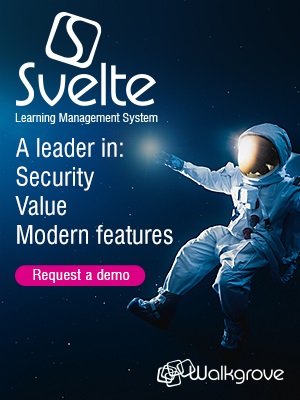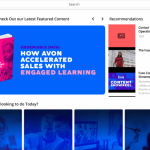A Blended learning channel strategy
A Learning Light consultancy approach….showing you how to succeed with elearning
This approach was first developed in 2007 for Learning Light, and we have found it has worked very well indeed with our clients. Increasingly we use this approach to blend not just classroom learning and elearning, but blend smartphone, desktop and tablets -the new blend or mix.
A channel strategy represents a set of decisions an organisation makes to access and provide services to customers. In addition to the support channel strategies can provide to organisations coping with the erosion of the traditional sources of competitive advantage, they are important because organisations are continually looking at their strategies in order to increase their returns and cost efficiency.
From a blended learning perspective, a systematic approach to developing various channels is a way of identifying end-to-end service components, and cost, as well as offering a vehicle for analysing behaviour and learning patterns.
In this article we provide some key insights for creating a channel strategy for blended learning and the challenges of matching theory to practice. At the end of this article we briefly explore some of the specific drivers for a large conservation group in the UK to create a channel strategy for blended learning.
Why a Channel Strategy for Blended Learning?
To target the growing diversity in the workplace, organisations are looking at new training models that connect and integrate a variety of tools to meet training needs. These new models are often referred to as blended learning models. ‘Getting the blend of training right’ often means focussing on optimising the outcomes of learning objectives by applying the ‘right’ technologies to the ‘right’ learning style to the ‘right’ group of people at the ‘right’ time
(Singh 2007).
If we look at the make up of the new learner they are mostly people who are competitive, place a lot of value on experiences, want flexible schedules, are open-minded and collaborative, embrace technology, and value speed, efficiency and relevancy.
So in response, organisations are finding that they need a blended approach to learning to ensure that learning programs:
- Provide a clear message.
- Engage learners in working experience they can relate to.
- Occur in smaller chunks of time.
- Be available rapidly and as near the concept of ‘on demand’ as possible.
- Provide a sense of community.
- Use technology.
- Include a variety of activities and interactions that move at a fairly rapid pace with instant feedback and rewards.
While the challenges of making blended learning work will pose the questions “how do we go about a blended program?” and “How do we design, develop and connect the components of learning?”, a channel strategy looks at the challenge of identifying the end- to-end service components – and cost – as well as providing a vehicle through which organisations can analyse behaviour and learning patterns.
Channel strategies are becoming increasingly important because at the same time as learning is becoming more complex in organisations, these same organisations are looking towards their strategies to increase returns and cost efficiency of expenditure. In addition, channel strategies can be used to help organisations address the challenge of change to the traditional sources of competitive advantage; to innovate and adopt more quickly than competitors.
The Basics of a Channel Strategy
Any strategy has two key elements: channels and services. Channels are the means organisations use to deliver services and to receive input from customers. These channels are often the post, telephone, face-to-face, and online tools.
Channels focus on internal processes of a business.
Services are the interactions that take place between the service provider and the user, e.g. enquiries, requests for information, after care and – internally- training.
An approach to creating a channel strategy must therefore take into account the broader issues of service delivery in an organisation and how this is undertaken.
What You Need to Consider
While all organisations will have their own unique situations and challenges, a few common principles apply to developing a channel strategy for blended learning. Before building the strategy, you should establish some form organisational foundations.
Establishing Firm Foundations
1. Start with your customers and their needs – in this case, your learners. Identify your target group and outline the related objectives. Determine how the training objectives are related to the overall business objectives. This step is crucial in guiding the choices about how much should be invested in this particular customer group.
2. Consider multi-channels. Online learning is not really enough. Recognise that benefits are maximised when channels are working together in concert.
3. Consider your full profile of your target audience. Take into account how they best receive training and how they best retain in. For instance, you may have a new generation of learners who do not learn well in classroom settings. The best learning environment for them may be on-the-job training or ‘stretch assignments’ that combine both formal and informal learning.
The role of different channels at each stage needs to be recognised in order to make choices about investment in both time and money. Previously, much of an organisation’s investment was in hardware and machines. Now organisations are investing more in people and skills, and giving employees access to opportunities that can provide timely and relevant training for the next new product, service change, shift in business objectives or changes in policy.
Addressing Organisational and Culture Issues
Once you have established common principles and thought about your target audience of learners, you should start to address some key organisational and cultural issues such as:
- The need for a team with a shared vision. Ensure you can get the whole or main parts of the organisation behind the change.
- The service delivery. This must be organised around those whom it seeks to engage. Delivery must be viewed as end to end processes.
- Efficiency and effectiveness should decide the function and design.
- Flexibility and sustainability must be accepted as essential
- Decision making should be made as close to the learner (be they internal or external) as possible.
Creating a Framework
After the foundation, dedicate sufficient time on creating a channel framework. The framework must be flexible and sustainable, and it should adhere to four basic rules:
- Know who you are trying to reach, how they think and behave, and what matters to them.
- Establish what type of contact they need to have with each other.
- Analyse the current channels of service (or training or learning) they use.
- Gather cost-to-service data on the current channels.
Creating a channel strategy for a very diverse group of people can be challenging. You must have a good perspective on your customer(s) as different people. Use different channels and channel combinations for different purposes and in different circumstances, and regardless of how many channels you develop and how well you evaluate them, you must learn and innovate continuously; monitor and review regularly.
Cost, Reach, Expertise, Visibility
With the foundation and framework established, other factors to consider when creating a channel strategy for blended learning are:
- Cost. What are your cost goals and tolerances? How much can you afford to train, support, and to provide incentives for your channels?
- Reach. What regions or market segments do you need access to? Do you want to reach different customers?
- Expertise. Do you need a channel that can provide a specific level of product or service expertise?
- Visibility. How well known is the channel? What is its reputation?
Employer and Employee Perspectives
Organisations must seek to empower employees because individuals are the ultimate source of competitive advantage. Blended learning accessed via a clear delivery channel can help employees be active participants in the learning and collaboration process. However, a common problem with channel strategies is that the concept and practice are not translated into widespread practical application.
In terms of blended learning, an organisation may be trying to adopt a tighter strategy for how to apply a shift in focus to the learning and business outcome, but for employees, blended learning is about getting the work done, when and where a need emerges, at a time and place of their choosing.
Blended learning can therefore take many forms. It might involve structured or casual interactions with instructors, peers, coaches, mentors and supervisors. It happens in classrooms, at home and in the field. It might involve time spent independently with reading materials, online modules. There maybe a group assignment or conversation with peers.
Technology can be a central part of blended learning as it can facilitate inexpensive collaboration and information sharing. It can also help to capture the various forms of learning taking place but the whole ethos of blended learning is in customisation, integration, purpose and flexibility. This makes it difficult to fully utilise ‘theory’. Many tools used in the blended learning approach place more power in the employees’ hands which in turn allows users to control the relevancy of content.
The most important dimension of blended learning and any channel strategy is to effectively combine work and learning. The genuine success of learning is found where work and learning are inseparable and where learning is embedded in business processes – such as hiring and sales.
Case Study: A Large Conservation Organisation in the UK
A large conservation organisation in the U.K. decided to create blended learning solutions for their training programs. Some of the benefits of incorporating blended learning related to scale, speed, complexity and cost. This organisation was looking for ways of exploiting more technology in order to decrease the amount of classroom training it was delivering.
In the first instance, it looked to supplement their current programs with elearning activities in order to extend the learning process and to better integrate it with the work environment. Variables such as time, cost and content stability formed a key part of discussions and decisions. It then had a solid foundation for a channel strategy and to look at training needs across the organisation. From a framework perspective, the organisation wanted employees to be able to: progress at their own pace, repeat parts of the programme as required, participate in communities of practice, and to enjoy interactions and guidance from peers. Finally, it wanted to bring learning, information and support to its employees’ specific locations.
With the experience and of developing channel strategies for blended learning, this organisation can invest confidently in a thorough redesign of the learning programmes in order to maximise business impact.
If you would like to find out more please Contact Us.






